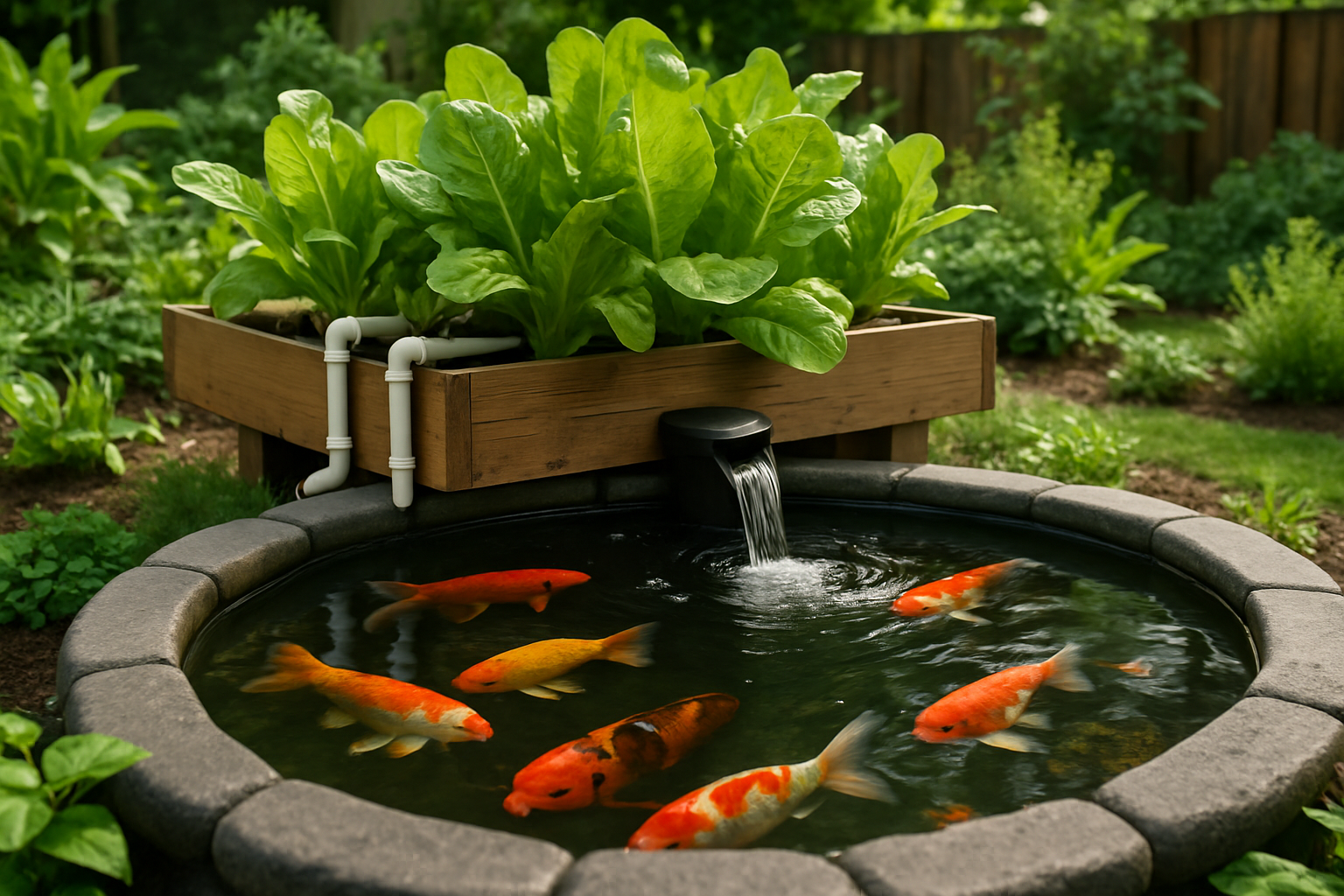Aquaponic Pet Ponds: The Future of Sustainable Backyard Ecosystems
Imagine a backyard oasis where fish, plants, and beneficial microorganisms coexist in perfect harmony, creating a self-sustaining ecosystem that's both beautiful and functional. This is the world of aquaponic pet ponds, an innovative approach to outdoor pet keeping that's gaining traction among eco-conscious animal lovers. By combining aquaculture and hydroponics, these systems offer a unique way to care for aquatic pets while cultivating lush greenery, all within a compact, resource-efficient space.

The concept of scaling down these systems for residential use emerged in the early 2000s, as sustainability-minded hobbyists sought ways to bring the benefits of aquaponics to their own backyards. This shift gave birth to the idea of aquaponic pet ponds, where ornamental fish like koi and goldfish could thrive alongside water-loving plants.
The Science Behind the System
At the heart of an aquaponic pet pond is a symbiotic relationship between fish, plants, and bacteria. The fish produce waste that is rich in ammonia, which is toxic to them in high concentrations. Beneficial bacteria in the system convert this ammonia into nitrites and then into nitrates, which serve as nutrients for the plants.
The plants, in turn, absorb these nutrients, effectively filtering the water and returning it clean to the fish. This closed-loop system mimics natural ecosystems, creating a balanced environment that requires minimal input once established.
Design and Setup
Creating an aquaponic pet pond involves careful planning and consideration of various factors. The size of the pond depends on the number and type of fish you plan to keep, as well as the desired plant variety. A typical backyard setup might range from 500 to 2,000 gallons, with larger systems offering more stability and flexibility.
Key components include:
- Fish pond: The main water body where your aquatic pets reside.
- Grow beds: Separate areas filled with a growing medium like expanded clay pebbles or gravel, where plants are cultivated.
- Pump system: To circulate water between the pond and grow beds.
- Filtration: While plants provide natural filtration, additional mechanical and biological filters may be necessary for optimal water quality.
The cost of setting up an aquaponic pet pond can vary widely, typically ranging from $1,000 to $5,000 for a DIY system, with professional installations potentially reaching $10,000 or more.
Choosing the Right Fish
While koi and goldfish are popular choices for aquaponic pet ponds, other species can thrive in these systems as well. Tilapia, for instance, are hardy fish that adapt well to various water conditions and produce ample waste to fuel plant growth. For colder climates, trout or perch might be suitable options.
When selecting fish, consider factors such as:
- Climate compatibility
- Growth rate
- Waste production
- Temperament (especially if mixing species)
- Legal restrictions in your area
It’s crucial to start with a small number of fish and gradually increase the population as the system matures and stabilizes.
Plant Selection and Care
The beauty of aquaponic pet ponds lies in their versatility when it comes to plant choices. From ornamental flowers to edible herbs and vegetables, the options are vast. Some popular choices include:
- Water lettuce and water hyacinth for surface coverage
- Iris and cattails for pond edges
- Mint, basil, and other herbs for aromatic appeal
- Leafy greens like lettuce and spinach for easy harvests
Plants in an aquaponic system often grow faster and larger than their soil-based counterparts due to the constant supply of nutrients. Regular pruning and harvesting are necessary to maintain balance and prevent overgrowth.
Maintenance and Troubleshooting
While aquaponic pet ponds are largely self-sustaining, they do require some ongoing care. Regular tasks include:
- Monitoring water quality (pH, ammonia, nitrite, and nitrate levels)
- Feeding fish appropriately
- Pruning and harvesting plants
- Cleaning filters and removing any debris
Common issues that may arise include algae blooms, pH imbalances, and pest infestations. Most problems can be addressed through natural means, such as introducing beneficial insects or adjusting fish feeding schedules, without resorting to harsh chemicals that could disrupt the delicate ecosystem.
Environmental and Educational Benefits
Beyond providing a home for aquatic pets and a source of fresh produce, aquaponic pet ponds offer significant environmental advantages. These systems use up to 90% less water than traditional gardening methods and eliminate the need for chemical fertilizers. They also serve as excellent educational tools, demonstrating principles of ecology, biology, and sustainable resource management in a tangible, engaging way.
The Future of Aquaponic Pet Ponds
As awareness of environmental issues grows and more people seek sustainable alternatives for pet keeping and gardening, aquaponic pet ponds are poised for increased popularity. Innovations in design and technology are making these systems more accessible and efficient, with potential for integration into smart home ecosystems for automated monitoring and maintenance.
The market for aquaponic equipment and services is expanding, with projections suggesting it could reach $1.5 billion globally by 2025. This growth is likely to bring more affordable and user-friendly options for homeowners interested in creating their own backyard ecosystems.
In conclusion, aquaponic pet ponds represent a fascinating intersection of pet care, gardening, and environmental stewardship. By recreating natural cycles in a controlled setting, these systems offer a glimpse into a more sustainable future where our living spaces can coexist harmoniously with the natural world.





